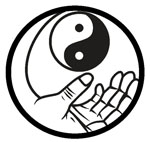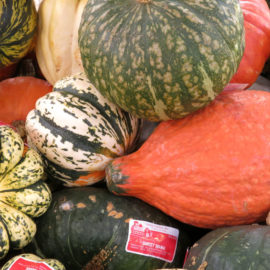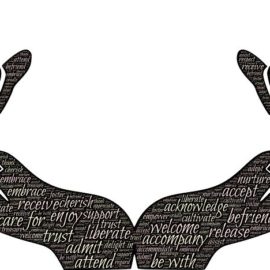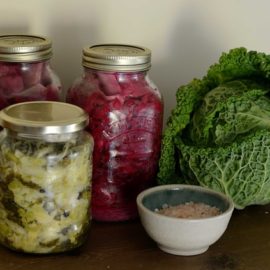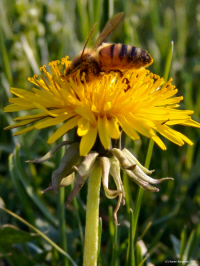
In the late spring I decided to make a tincture from dandelion root, leaf and flower. My friend and acupuncture colleague Carol offered to let me come out to her farm and dig all the dandelions my heart desired. All I needed were a bag and a small hand trowel. Dandelions roots can go deep, and the only frustrating thing was getting a hold on a large long root and having it break off. It did not take long to get plenty of dandelions, however. I also noticed quite a bit of lance-leaf plantain, so I gathered plenty of it, too.
Here is the harvest about one hour after being dug up. It is just starting to get a little wilted. This is just outside my front door. I take them inside, wash everything, spin it in a salad spinner, and select the best looking leaves and flowers.
The result of the cleaning and culling: 90+ grams of root, 20 grams of leaves, and 20 grams of flowers.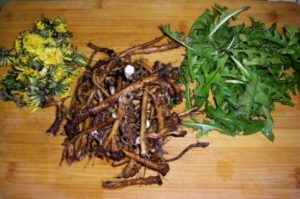
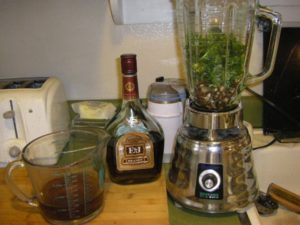
Here are the ingredients. In the blender is 130 grams of plant material. Normally I would make a 1:2 tincture of fresh herb. That would mean for every gram of herb I would use 2 ml of menstrum—in this case brandy. I use brandy as it is a little sweet and should help offset the bitter of the dandelion. I still want bitter flavor, but the brandy makes a nice balance. However, in this case I choose to make a 1:3 tincture. I have 130 grams of herb, so I need 390 ml of brandy. I round up to 400ml and end up adding just a little more to top it off.
Here’s the 3:1 tincture fresh out of the blender. I often use 190 proof grain alcohol for tincturing fresh herbs. But I have found that the typical 80 to 90 proof vodka or brandy works well too. You can use apple cider vinegar, too. Be sure to use a plastic lid, or use plastic film between the jar and the lid, as the vinegar will corrode the metal. I plan on letting it sit for three weeks before decanting, agitating it once per day (maybe twice). I get busy on the third weekend and end up leaving it in the jar for 4 weeks. I decant it through several layers of unbleached organic cotton cheesecloth. I then let it sit for a week and let the sediment settle. I funnel it off the lees into an amber bottle with a label stating what it is, when it was made and what the ratio of plant to solvent is. 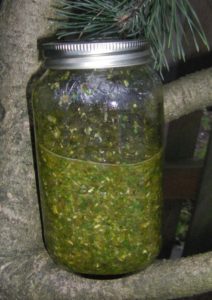
It doesn’t taste nearly as bitter as I thought it would. Perhaps this is due to the flowers.
It may surprise you to learn this so-called weed is a rich source of vitamins A, and C, two antioxidants. Dandelion also contains high amounts of B complex and vitamin D, as well as the minerals iron and zinc and potassium.
Because dandelion leaves are high in potassium they can be a useful mild natural diuretic. Potassium is often lost from the body with the use of other diuretics. These young tender leaves can be a welcome addition to a salad of spring greens, added to sandwiches or sautéed in a vegetable stir fry.
Dandelion flowers are surprisingly sweet. They can be used to make wine, or battered and fried as fritters. A tea made from the flowers can be used as the base of dandelion jelly. The flowers also have medicinal properties. They are a source of lecithin, which can increase your brain’s acetylcholine, a substance which helps maintain healthy brain function and may play a role in slowing or even stopping Alzheimer’s disease.
Dandelion root is used as a mild appetite stimulant. It can improve upset stomach with a feeling of fullness, gas and/or constipation. In traditional herbal medicines, dandelion root has been used to improve liver and gallbladder function.
Do not take dandelion if you are pregnant or have any acute gastric inflammation.
The dose for dandelion tincture is 2-5 ml, or between 40 and 100 drops.
